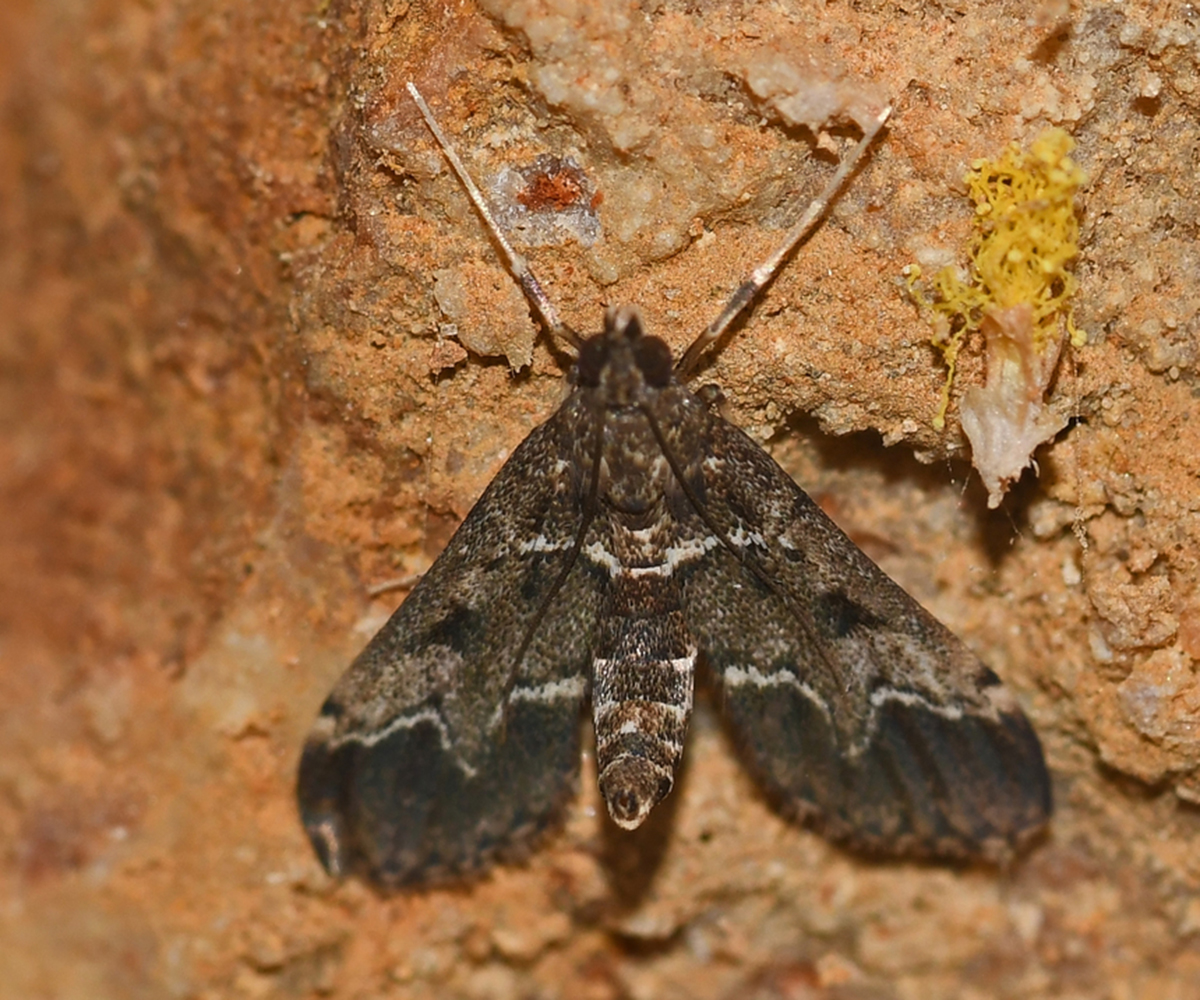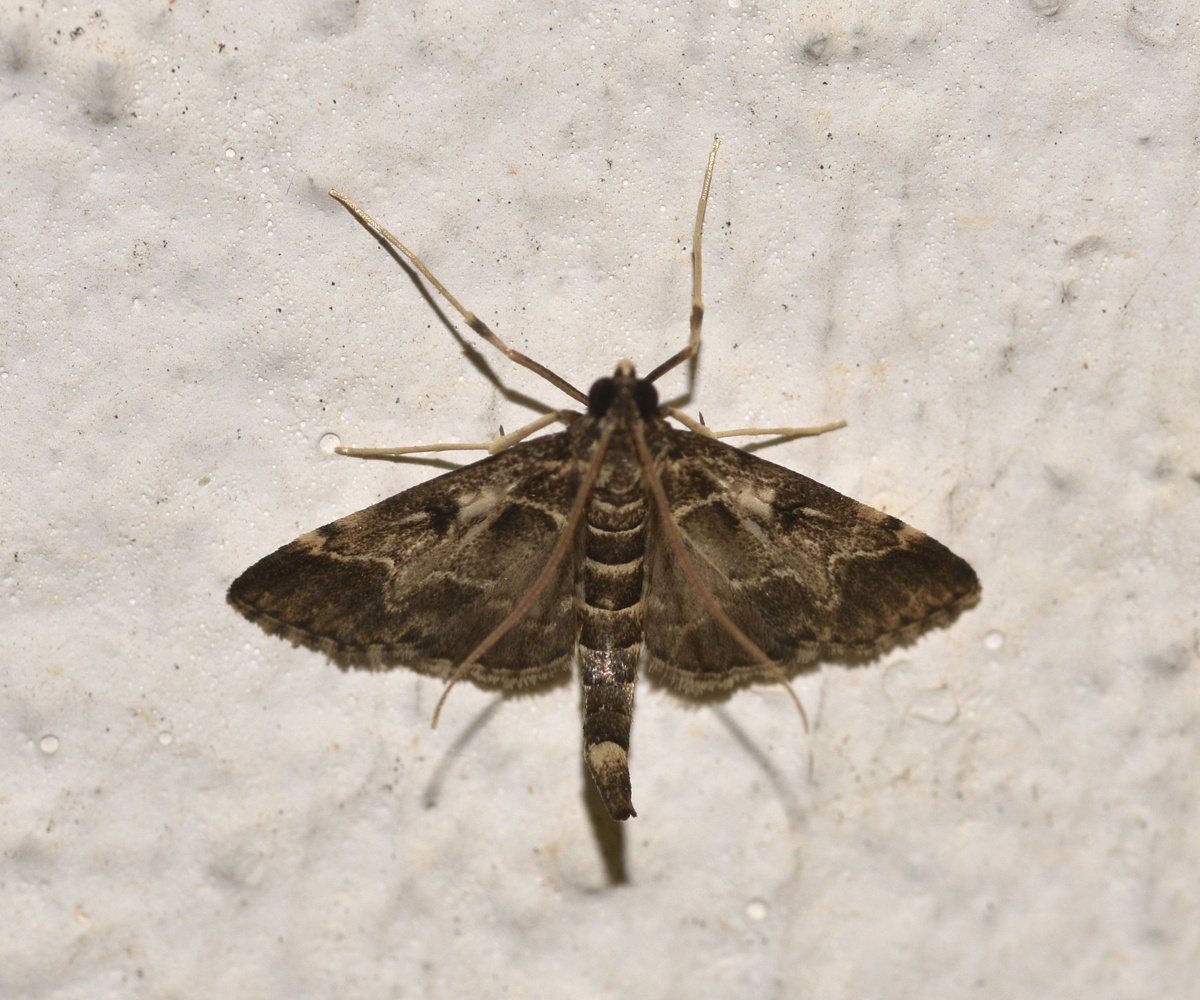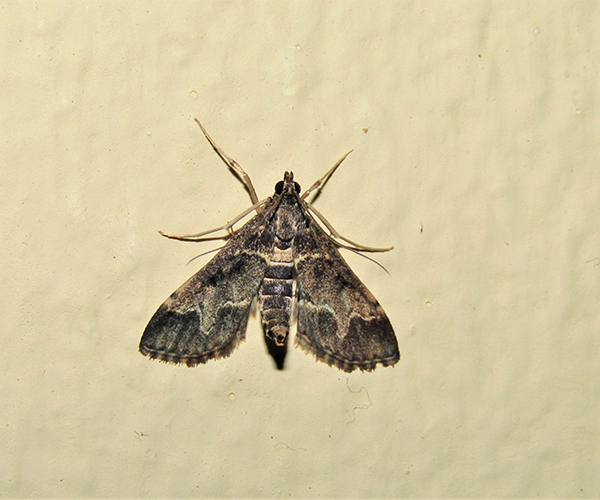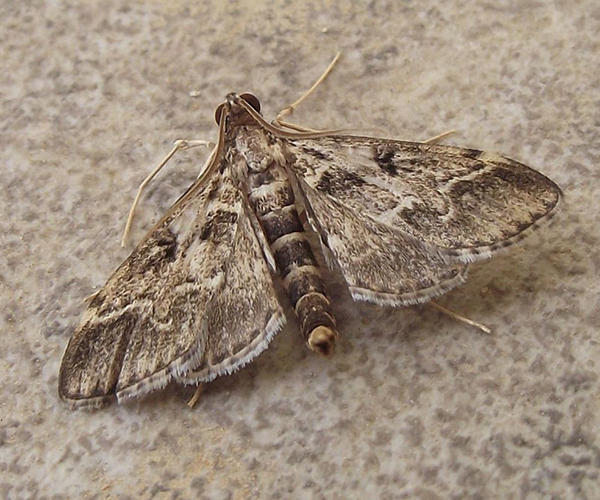
Duponchelia fovealis, Crete - photo © K. Bormpoudaki
Duponchelia fovealis (Zeller, 1847)
MOTH INFO
Duponchelia fovealis is a moth of the family Crambidae on the island of Crete, Greece.
Scientific name
Duponchelia fovealis (Zeller, 1847)
Synonyms
Hymenia griseata (Butler, 1875)
Common name
Classification
Superfamily: Pyraloidea > Family: Crambidae > Subfamily: Spilomelinae > Tribus: Steniini > Genus: Duponchelia
Wingspan
19-21 mm
Appearance
The forewings are gray-brown in color with two yellowish-white transverse lines. The outermost of these lines has a pronounced “finger" that points toward the back edge of the wing. When at rest, the wings are held out from the body forming a triangle. The head, antennae, and body are olive-brown. The hindwings of both sexes are pale-olive brown with a cream-colored wavy line crossing the middle of the wing. They fly low and fast with their abdomen curved upwards, which gives the species a unique flight pattern.
Habitat
It is endemic to the area surrounding the Mediterranean Sea, and the Canary Islands, but has extended its range to other parts of Africa, Europe, the Middle East, and North America.
Food plant
The European Pepper moth has been listed as a pest on a large number of plants; its larva is extremely polyphagous. Host plants include a wide range of mostly herbaceous ornamental plants and field crops, such as Araceae, Convolvulaceae, Crassulaceae, Euphorbiaceae, Plumbaginaceae, Poaceae, Ranunculaceae, Rosaceae, etc. The larva can usually be found in a web at the basal part of the plant.
Flight period
| Jan | Feb | Mar | Apr | May | Jun | Jul | Aug | Sep | Oct | Nov | Dec |





